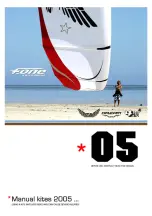
CESSNA
SECTION
4
MODEL 152
NORMAL PROCEDURES
1 July 1978
4-
14
TAKEOFF
POWER CHECK
It is important to check full-throttle engine operation early in the takeoff run. Any sign of rough
engine operation or sluggish engine acceleration is good cause for discontinuing the takeoff. If
this occurs, you are justified in making a thorough full-throttle static runup before another
takeoff is attempted. The engine should run smoothly and turn approximately 2280 to 2380
RPM with carburetor heat off and mixture leaned to maximum RPM.
Full throttle runups over loose gravel are especially harmful to propeller tips. When takeoffs
must be made over a gravel surface, it is very important that the throttle be advanced slowly.
This allows the airplane to start rolling before high RPM is developed, and the gravel will be
blown back of the propeller rather than pulled into it. When unavoidable small dents appear in
the propeller blades, they should be immediately corrected as described in Section 8 under
Propeller Care.
Prior to takeoff from fields above 3000 feet elevation, the mixture should be leaned to .give
maximum RPM in a full-throttle, static runup.
After full throttle is applied, adjust the throttle friction lock clockwise to prevent the throttle from
creeping back from a maximum power position. Similar friction lock adjustment should be
made as required in other flight conditions to maintain a fixed throttle setting.
WING FLAP SETTINGS
Normal takeoffs are accomplished with wing flaps 0
°
- 10
°
. Using 10
°
wing flaps reduces the
total distance over an obstacle by approximately 10%. Flap deflections greater than 101 are
not approved for takeoff. If 10
°
wing flaps are used for takeoff, they should be left down until
all obstacles are cleared and a safe flap retraction speed of 60 KIAS is reached.
On a short field, 10
°
wing flaps and an obstacle clearance speed of 54 KIAS should be used.
This speed provides the best overall climb speed to clear obstacles when taking into account
turbulence often found near ground level.
Soft or rough field takeoffs are performed with 10
°
wing flaps by lifting the airplane off the
ground as soon as practical in a slightly tail-low attitude. If no obstacles are ahead, the
airplane should be leveled off immediately to accelerate to a higher climb speed.
Summary of Contents for 152 1979
Page 8: ...CESSNA GENERAL MODEL 152 1 July 1978 1 2 Figure 1 1 Three View ...
Page 50: ...CESSNA SECTION 4 MODEL 152 NORMAL PROCEDURES 1 July 1978 4 12 ...
Page 62: ...CESSNA SECTION 5 MODEL 152 PERFORMANCE 1 July 1978 5 2 ...
Page 82: ...CESSNA SECTION 6 MODEL 152 WEIGHT BALANCE EQUIPMENT LIST 1 July 1978 6 2 ...
Page 87: ...CESSNA SECTION 6 MODEL 152 WEIGHT BALANCE EQUIPMENT LIST 1 July 1978 6 7 ...
Page 88: ...CESSNA SECTION 6 MODEL 152 WEIGHT BALANCE EQUIPMENT LIST 1 July 1978 6 8 ...
Page 94: ......
Page 95: ......
Page 96: ......
Page 97: ......
Page 98: ......
Page 99: ......
Page 100: ......
Page 104: ...CESSNA SECTION 7 MODEL 152 AIRPLANE SYSTEMS DESCRIPTIONS 1 July 1978 7 4 ...
Page 105: ...CESSNA SECTION 7 MODEL 152 AIRPLANE SYSTEMS DESCRIPTIONS 1 July 1978 7 5 ...
Page 106: ...CESSNA SECTION 7 MODEL 152 AIRPLANE SYSTEMS DESCRIPTIONS 1 July 1978 7 6 ...
Page 112: ...CESSNA SECTION 7 MODEL 152 AIRPLANE SYSTEMS DESCRIPTIONS 1 July 1978 7 12 ...
Page 120: ...CESSNA SECTION 7 MODEL 152 AIRPLANE SYSTEMS DESCRIPTIONS 1 July 1978 7 20 ...
Page 123: ...CESSNA SECTION 7 MODEL 152 AIRPLANE SYSTEMS DESCRIPTIONS 1 July 1978 7 23 ...
Page 128: ...CESSNA SECTION 7 MODEL 152 AIRPLANE SYSTEMS DESCRIPTIONS 1 July 1978 7 28 ...
Page 133: ...CESSNA SECTION 7 MODEL 152 AIRPLANE SYSTEMS DESCRIPTIONS 1 July 1978 7 33 ...
Page 137: ...CESSNA SECTION 8 MODEL 152 HANDLING SERVICE MAINTENANCE 1 July 1978 8 2 ...
















































